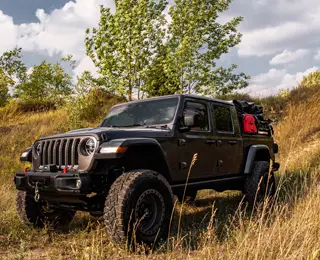4x4 Wheel Alignment: Protect Your Ride On and Off the Road
When you own a 4x4 vehicle, including Jeeps, some SUVs, trucks, and tow vehicles, a 4-wheel or thrust alignment is a crucial part of your overall maintenance. That can be especially true if you take your rig off-road or you drive something with a lift kit and/or larger tires. Knowing when to get your alignment done, including what to look for as you near your next service, can be the key to maintaining proper performance and safety as well as maximizing fuel efficiency and extending the life of your tires and suspension components. Let’s take a look at alignments on today’s 4x4s and how to protect your ride.
Schedule Your AlignmentWhat is a 4x4 Wheel Alignment and Why Does it Matter?
4-wheel alignments are necessary for most all-wheel drive and some 4x4 vehicles, front-wheel drive options, and passenger cars. A thrust alignment, also called a 2-wheel alignment, is necessary for most larger trucks and 4x4s with solid rear axles. This means only the front can be adjusted.
Whether you have a 4x4 or AWD rig, including those with larger tires or lift kits, an alignment adjusts the front suspension and steering of your vehicle. These adjustments may include the camber, caster, and toe on the tire and wheel assemblies that need it.
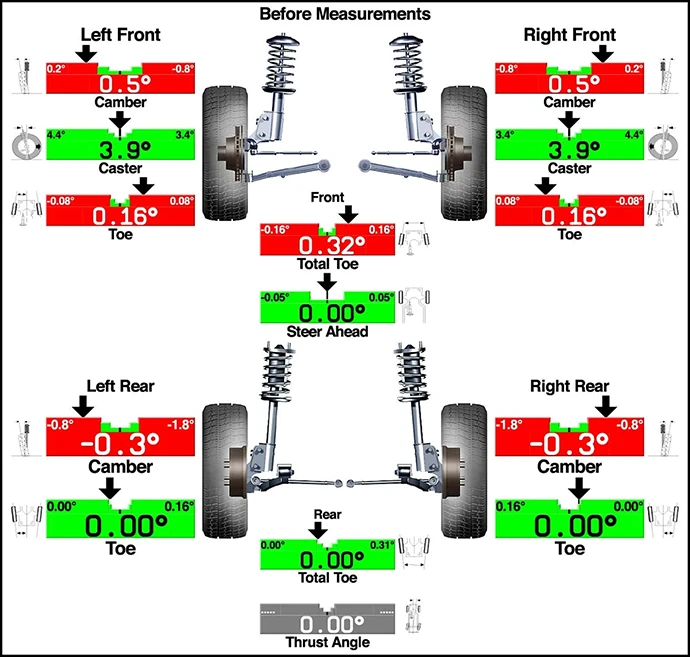
Why keep your vehicle properly aligned? Because a vehicle that is in alignment will not likely pull to the right or left, may ride better, could save you money at the pump, and may promote even tire wear. For these reasons and more, an alignment also generally makes vehicles safer to drive.
Allowing your vehicle to remain out of alignment for too long might not only make it harder to drive both on and off-road, it can also impact your advanced safety systems (including lane departure warnings, emergency braking, and adaptive cruise control). Plus, you could also damage parts of your suspension system, including the shocks, struts, and tie rods.
Signs Your 4x4 Might Be Out of Alignment
4x4s and lifted vehicles, as well as other vehicles that see a lot of dirt, rocks, and off-roading, can easily go out of alignment. Signs that your ride is out of alignment include the following.
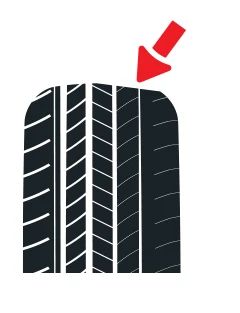
Uneven or Premature Tire Wear
Tires that are showing uneven wear (where some areas of the tire are wearing down faster than the rest of the tread) - can be a sign of a vehicle that is out of alignment.
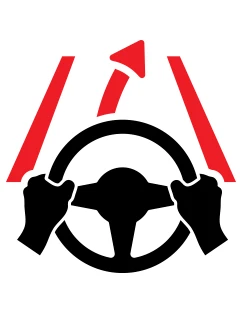
Poor Handling On or Off the Road
Pulling to the left or right as you drive down the road could indicate the need for an alignment. This can be especially important on lifted vehicles as well as rigs with larger tires.
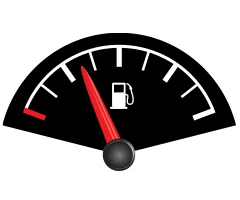
Reduced Fuel Efficiency
Poor alignment can cause tires to drag slightly (when they are not all facing the same direction), causing added friction. This leads to reduced fuel efficiency.
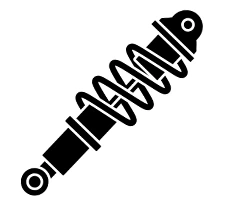
Unusual Wear or Strain on Suspension Components
Misaligned wheels can put undue stress on the steering and suspension. That could include your tie rods. The damage can get worse the longer you wait.
While it’s not always an indication of an alignment issue, an off-center steering wheel can also be a sign that it’s time to get to Les Schwab.
Common Causes of Misalignment in 4x4s
Taking a 4x4 over rocks, through streams, and across miles of washed-out dirt roads can certainly cause some alignment issues. But even potholes and everyday driving can cause your vehicle to go out of alignment. Here are some of the more common ways that your alignment can be compromised.
- Hitting curbs or potholes
- Off-road driving on rocky or uneven terrain
- Anytime you lower or lift your vehicle
- When replacing steering or suspension parts
- Towing something heavy over many miles
- General wear and tear
- After most accidents
Why Routine Alignment Checks Save Money on 4x4s
The professionals at Les Schwab suggest getting your alignment checked at least twice a year. Two of the best times to have your alignment checked include early spring and fall. This simple bit of maintenance could help prevent uneven tire wear, reduce strain on your steering components and drivetrain, save you money on gas, and make your 4x4 more responsive and enjoyable to drive. In other words, you might spend some money getting your vehicle aligned, but you’ll save more in the long run.
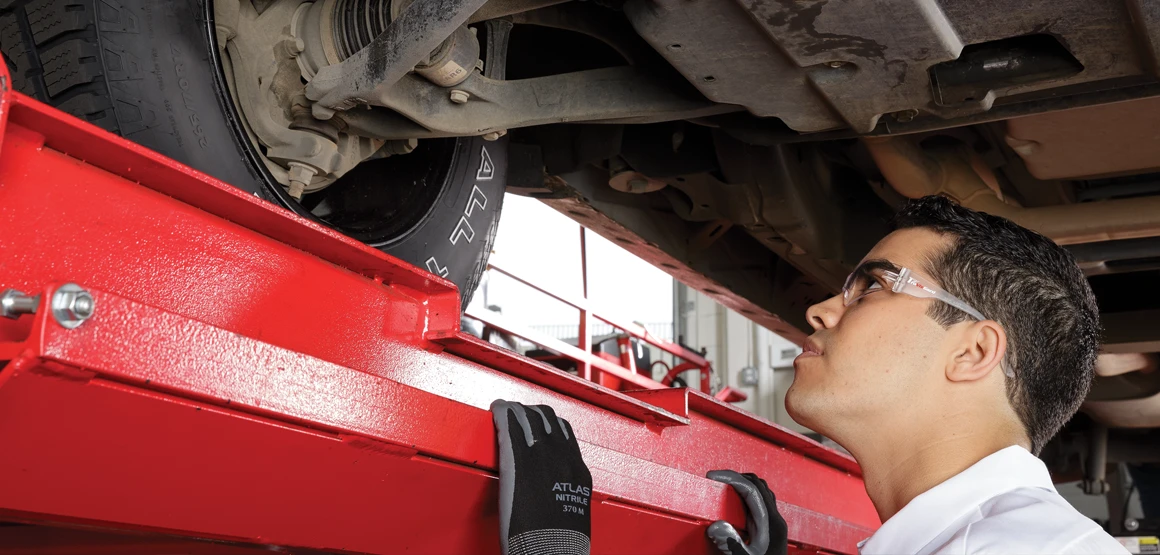
Protect Your 4x4 with Proper Alignment
At Les Schwab, we’re happy to give your 4x4, tow vehicle, lifted truck, SUV, or crossover a free visual inspection. If there’s nothing wrong, we’ll send you on your way. If it appears to need an adjustment, we’ll suggest a more comprehensive check.
Not sure if your ride needs an alignment? Check out our list of wheel alignment FAQs. When you’re ready for a quick check, stop by any Les Schwab location.
Schedule an Appointment
